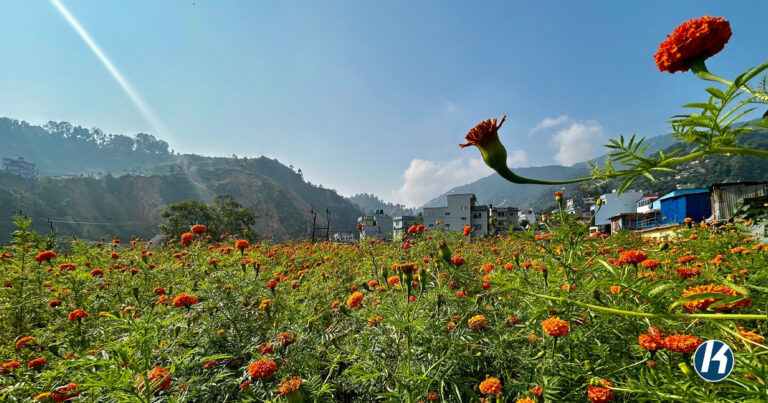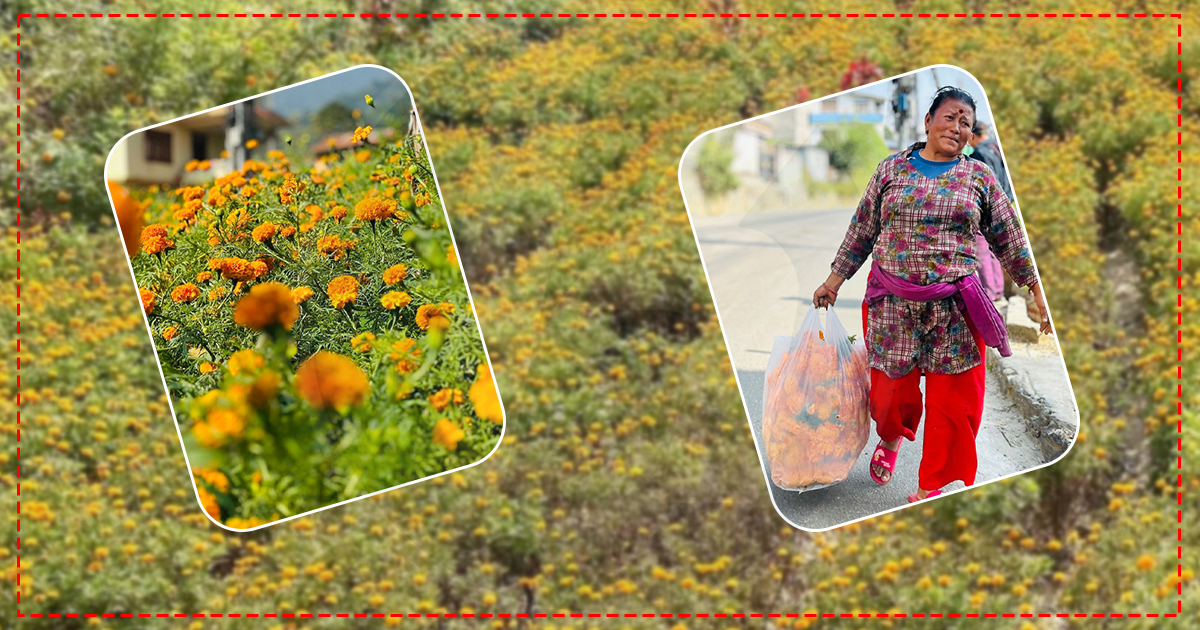KATHMANDU: As Dashain concludes, Nepalis are eagerly anticipating the celebration of Tihar, a festival celebrated primarily with flowers and lights.
During Tihar, it is customary for sisters to adorn their brothers and sisters with garlands and Bhai Tika.
With Tihar approaching, there is a surge in demand for flowers, particularly Marigold, Makhamali (Globe Amaranth) and Godavari (Yellow Chrysanthemum).
Farmers are busy harvesting these blooms from their fields.
In and around the Kathmandu Valley, flower farmers are racing to pick flowers and transport them to the market.
In Nagarjun Municipality-3, Ichangu, local farmers are also actively gathering flowers for Tihar sales.
Most farmers in Ichangu specialize in flower cultivation, but many express disappointment over this year’s flower business, which has not improved compared to last year.
With only 10 days remaining until Tihar, the market for flower garlands appears limited.
Pushpa Katuwal, a flower seller from Ichangu, noted that last year she sold 20 to 25 bunches of flowers daily after Dashain, but this year she struggles to sell even 6 or 7 bunches a day.

“The flower business is not like it was in the past,” Pushpa lamented.
“Only 6-7 handfuls are sold in a day, whereas previously I used to sell up to 20 or 25 bunches.”
Ishwara Dutta Pathak, another farmer in Ichangu, echoed her sentiments, saying that the Tihar flower market has not been satisfactory this year.
“The flower business is not thriving,” she said.
“Even though Tihar is still days away, many people are traveling abroad or pursuing other opportunities, leading to a decline in flower sales.”
Ishwara expressed concern about the challenges farmers face in making a livelihood due to the lack of market demand for flowers.

Despite these struggles, he confirmed that farmers remain busy transporting their blooms to market.
Like Pushpa and Ishwara, many farmers in Ichangu are currently focused on picking flowers, crafting garlands, and delivering their products to market.
Farmers from nearby areas, including the Godavari area of Lalitpur, are also engaged in similar activities as Tihar approaches.










Comment